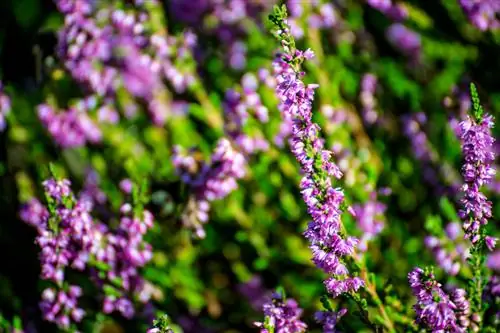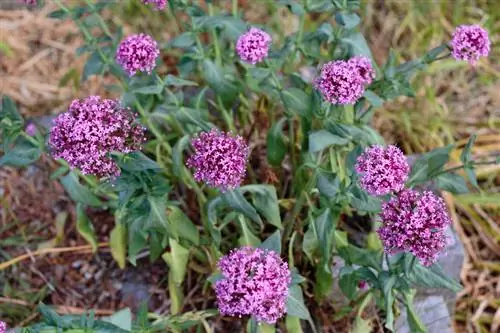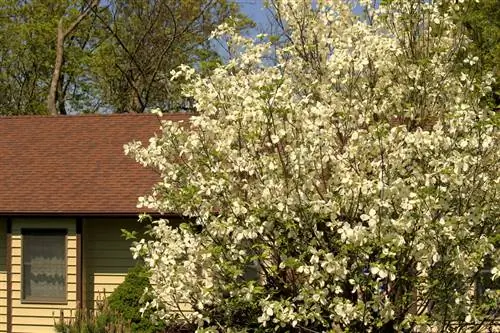- Author admin [email protected].
- Public 2023-12-16 16:46.
- Last modified 2025-01-23 11:20.
Both the heather, also known as Erica, and the closely related common heather (Calluna vulgaris) belong to the large heather family (Ericaceae) and have very similar requirements in terms of location and care.

How do you care for heather properly?
Heather care includes regular watering without waterlogging, fertilizing twice with organic or bog plant fertilizer, pruning after flowering and, if necessary, winter protection for sensitive varieties. Hardy varieties do not require additional frost protection.
Do you have to water the heather?
Heather is very sensitive to drought and must not be allowed to dry out under any circumstances. The soil should therefore always be well moistened, and watering should be regular and plentiful, especially in the hot summer months and during dry periods. The same applies to winter, which is why a layer of mulch in the root area is a useful preparation for the cold season; The mulch stores moisture and thus counteracts drying out.
When and how should you fertilize the heather?
Basically it is enough to fertilize the heather twice a year: once at the beginning of the growing season and once after pruning. Use organic fertilizer for this (horn shavings (€32.00 on Amazon) are particularly suitable) or special fertilizers for ericaceous plants.
When is the right time to cut heather?
Either directly after flowering in autumn (summer heather) or in spring (winter heather), the heather is cut back heavily to prevent baldness.
What should you consider when cultivating heather in a pot?
Heather in the pot should be fertilized regularly with moor plant fertilizer, and the root ball must not dry out - however, waterlogging should also be avoided, otherwise the plant will rot from below. If possible, choose winter-hardy varieties that do not require additional protection.
Is heather susceptible to diseases or pests?
The heather is very robust and not very susceptible to any diseases or pests. Only the honey fungus can cause significant damage, especially to summer heather, by causing white rot in the wood. In the event of an infestation, the only solution is usually to pull out the affected heather and replace the contaminated soil.
Is heather hardy?
Depending on its area of origin, heather may or may not be hardy. The common heather, also known as summer heather - especially the bud heather - as well as the winter or snow heather are hardy. Other species (e.g. the tree heather Erica arborea), however, come from regions with milder climates and are therefore not hardy.
How should you overwinter heather?
Winter-hardy varieties don't actually need any additional protection, but more sensitive ones should be protected from frost with a layer of leaves or mulch or brushwood.
Tip
If the heather dries up from below and therefore turns brown, it is usually not a lack of water, but - on the contrary - waterlogging with progressive root rot.






